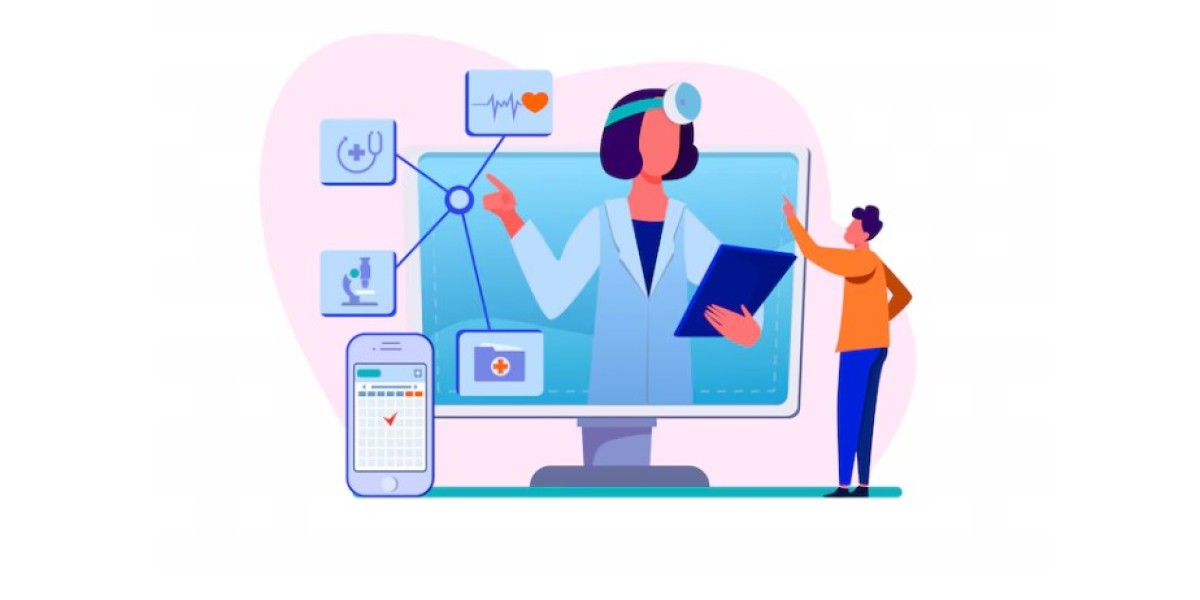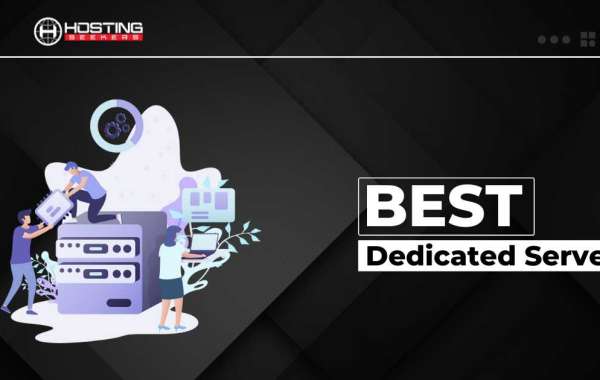Revolutionizing Care with Remote Patient Monitoring Software
Remote healthcare has come a long way from the era of phone-based check-ins and sporadic home visits. Today’s digital age has ushered in an unprecedented expansion of telehealth and home-based care, with remote patient monitoring software emerging as a critical component. This technology allows healthcare providers to track patient vitals, symptoms, and progress in real time—enabling proactive, personalized care that improves clinical outcomes and reduces costs.
In the sections that follow, we’ll explore the fundamentals of remote patient monitoring (RPM), discuss how a custom healthcare software development company can help tailor these solutions to specific clinical needs, and examine the value proposition for patients, providers, and the healthcare industry as a whole.
Introduction to Remote Patient Monitoring
Remote patient monitoring is a subset of telehealth focused on collecting health data—like blood pressure, heart rate, blood glucose levels, and respiratory rates—from patients outside of traditional clinical settings. Through specialized software and connected devices (such as wearable sensors or at-home monitoring kits), these vital signs and other data points are transmitted securely to a healthcare facility or clinician.
Healthcare providers analyze this information, often supported by AI-driven insights, and respond promptly to anomalies or signs of deterioration. This proactive approach can make a life-changing difference for patients managing chronic conditions, post-operative recovery, or even general wellness routines.
Why Remote Patient Monitoring Software Matters
Enhancing Access to Care: Not all patients can travel easily to a hospital or clinic. Remote patient monitoring bridges geographical gaps and alleviates mobility challenges, ensuring consistent access to healthcare services for rural communities, individuals with chronic disabilities, or older adults.
Reducing Hospital Readmissions: RPM significantly mitigates the likelihood of hospital readmissions by enabling healthcare teams to catch early warning signs. If a patient’s vitals suddenly spike or drop, the software sends immediate alerts, allowing clinicians to intervene before conditions worsen.
Empowering Patients: Real-time data insights encourage patients to be more engaged in their own care. When patients can track their daily metrics—steps taken, sugar levels, or blood pressure readings—they’re likely to feel more accountable, leading to better lifestyle choices and medication adherence.
Cost-Effectiveness: By preventing unnecessary emergency room visits and hospital stays, RPM drives down healthcare costs for both providers and patients. Additionally, insurers increasingly recognize the value of proactive health monitoring, offering coverage or incentives for these services.
Improving Clinical Efficiency: For providers managing large patient populations, RPM streamlines workflows by prioritizing patients who show abnormal readings or need immediate attention. Staff can optimize their time on critical interventions rather than routine check-ins.
Key Features of Remote Patient Monitoring Software
Though different RPM platforms offer various functionalities, several core components drive the success of a robust system:
Secure Data Transmission: Healthcare data is highly sensitive, mandating stringent encryption protocols. Effective RPM software transfers patient data securely over networks, ensuring compliance with regulations like HIPAA (in the U.S.) and GDPR (in the EU).
Real-Time Alerts and Notifications: The software continuously analyzes data to detect abnormal readings. When something deviates from a patient’s normal range—like a sudden spike in blood pressure—a real-time alert notifies healthcare teams via text, email, or in-app messaging.
Device Integration: Remote patient monitoring relies on wearable devices, home-based sensors, or mobile apps to collect data. Seamless integration between hardware and software ensures accurate, consistent data flow.
Patient Portals and Dashboards: Engaging patients is critical for long-term success. User-friendly interfaces let patients view their progress, receive educational materials, and even communicate with providers through secure messaging.
Analytics and Reporting: Modern RPM platforms use AI and machine learning algorithms to identify trends, flag potential risks, and generate comprehensive reports for healthcare providers. This helps clinicians fine-tune patient care plans based on data-driven insights.
Role of a Custom Healthcare Software Development Company
While off-the-shelf remote patient monitoring solutions exist, they may not always align with a particular healthcare organization’s requirements. Here’s where a custom healthcare software development company can play a pivotal role:
Tailoring Solutions to Specific Needs: Every hospital or clinic may have unique workflows, patient demographics, or compliance rules. Customized software can be built or adjusted to reflect these nuances, ensuring a seamless fit.
Scalability and Flexibility: As patient volumes grow or new service lines are introduced, the RPM platform should scale efficiently. A custom solution can be designed with modular architecture, allowing for effortless feature expansion or system upgrades.
Integration with Existing Systems: Healthcare providers frequently run electronic health records (EHR), billing systems, and appointment schedulers. Custom development supports smoother data exchange among these systems, reducing administrative burden and minimizing errors.
Ongoing Support and Updates: Technology evolves rapidly, and so do regulatory standards. A custom software partner can offer continuous maintenance, security patches, and feature enhancements, ensuring the RPM solution remains compliant and cutting-edge.
Brand Consistency: For large healthcare networks, maintaining a unified brand experience can bolster patient trust. Customized platforms that reflect an organization’s look and feel—from logos to color schemes—reinforce this identity at every patient touchpoint.
Implementing Remote Patient Monitoring: Step-by-Step
1. Define Clear Objectives: Before introducing RPM, determine the primary goals—reducing hospital readmissions, enhancing chronic disease management, or expanding access to rural communities, for example.
2. Select Suitable Devices and Software: Look for FDA-approved or medically certified wearables, sensors, and mobile applications. Evaluate software features such as security compliance, analytics, and device compatibility.
3. Customize Workflows: Develop standardized procedures for enrolling patients, monitoring data, and responding to alerts. Clearly delineate responsibilities among nurses, physicians, and tech support to minimize confusion.
4. Train Clinical Teams and Patients: Comprehensive training is imperative. Clinicians should understand how to interpret data, patients need to feel comfortable using devices, and technical staff must manage the software smoothly.
5. Pilot and Scale: Start with a small patient group—preferably those most likely to benefit, such as heart failure patients or individuals with uncontrolled diabetes. Monitor outcomes, gather feedback, and refine processes before expanding the program.
6. Evaluate and Improve: Leverage analytics to track KPIs: how often are alerts triggered, are readmission rates decreasing, do patients report higher satisfaction? Use these metrics to refine protocols, devices, or user interfaces.
Real-World Benefits and Success Stories
- Chronic Care Management: A significant number of pilot studies reveal that heart failure patients using RPM have fewer readmissions and report feeling more in control of their health.
- Post-Surgical Follow-Up: Some hospitals provide RPM kits for patients discharged after major surgery. Wearable sensors detect signs of infection or complications early, prompting timely intervention and drastically cutting costs.
- Diabetes Management: For diabetic patients, real-time glucose monitoring integrated with a smartphone app and RPM platform leads to improved glycemic control. This synergy of technology and clinical oversight reduces the risk of costly complications like neuropathy and vision loss.
Challenges and Considerations
Data Privacy and Security: Unauthorized access to healthcare data can have severe legal and ethical implications. Providers must employ encryption, secure APIs, and strong authentication measures.
Regulatory Compliance: Different regions maintain varying regulations on telehealth, device approval, and data usage. Ensuring compliance is paramount to avoid penalties and maintain patient trust.
Reimbursement and Financial Models: In some places, insurance coverage for RPM may be limited. Demonstrating cost-effectiveness and advocating for policy changes can improve reimbursement opportunities.
Patient Engagement: Technology alone isn’t a silver bullet. Success hinges on patients’ willingness to comply, record readings accurately, and engage consistently with the platform. Thorough onboarding and user-friendly design help mitigate these risks.
Clinician Workflow Integration: If the system isn’t seamlessly integrated into clinicians’ daily routines, it can lead to alert fatigue or administrative overload. Tools that prioritize alerts and integrate with EHRs reduce these challenges.
Future Trends in Remote Patient Monitoring
- Artificial Intelligence for Predictive Insights: Advanced AI models can learn from historical data to anticipate critical events—such as heart attacks or diabetic emergencies—well before they occur.
- Smart Homes and IoT Integration: Beyond wearable devices, entire living environments may become “smart,” detecting falls, monitoring air quality, and collecting health metrics from multiple vantage points.
- Biometric Security: Fingerprint or facial recognition can secure patient data while simplifying device usage.
- Global Adoption: As internet connectivity expands globally, emerging markets will likely embrace RPM to compensate for healthcare resource gaps.
- Remote Clinical Trials: Pharmaceutical companies are already testing virtual clinical trials, using RPM to gather data from participants in real-time, broadening the geographic scope and diversity of trial populations.
Conclusion
Remote patient monitoring software isn’t just a buzzword—it’s a transformative technology reshaping the way healthcare is delivered. By offering real-time visibility into patient status, RPM fosters proactive intervention, reduces hospital readmissions, and elevates patient engagement. For healthcare organizations grappling with staffing shortages, rising costs, and a growing prevalence of chronic illnesses, RPM represents a lifeline that promises both financial sustainability and superior patient outcomes.
Yet not all RPM solutions are created equal. Partnering with a custom healthcare software development company can ensure that your remote monitoring platform seamlessly aligns with your operational workflows, scales for future growth, and maintains airtight data security. As telehealth continues to gain traction, a well-implemented RPM strategy will be critical for any healthcare provider seeking to thrive in a rapidly evolving digital landscape.
Frequently Asked Questions (FAQ)
Q1: What is remote patient monitoring software?
Answer: Remote patient monitoring software is a digital platform that collects patient health data (e.g., vital signs, activity levels, symptoms) via connected devices outside the clinic or hospital setting. This data is analyzed in real time, allowing healthcare providers to make proactive and informed decisions.
Q2: How does a custom healthcare software development company add value to RPM?
Answer: Such a company can tailor the platform to an organization’s unique needs—integrating with existing EHR systems, adhering to strict security protocols, and providing ongoing support and upgrades to keep the software cutting-edge.
Q3: What conditions benefit most from remote patient monitoring?
Answer: Chronic diseases like heart failure, diabetes, and hypertension see the most significant benefit, as these conditions require consistent tracking and early intervention. However, RPM is also valuable for post-surgical follow-up and general wellness monitoring.
Q4: Is it difficult for patients to use RPM devices?
Answer: Most modern RPM tools prioritize user-friendly designs. With clear instructions and adequate support, patients can typically operate devices and track their health metrics without extensive technical knowledge.
Q5: Does insurance cover remote patient monitoring?
Answer: Coverage varies by location and insurance provider. Some governments and private insurers now recognize the cost-saving potential of RPM and offer reimbursement, but it’s essential to verify individual coverage policies.










